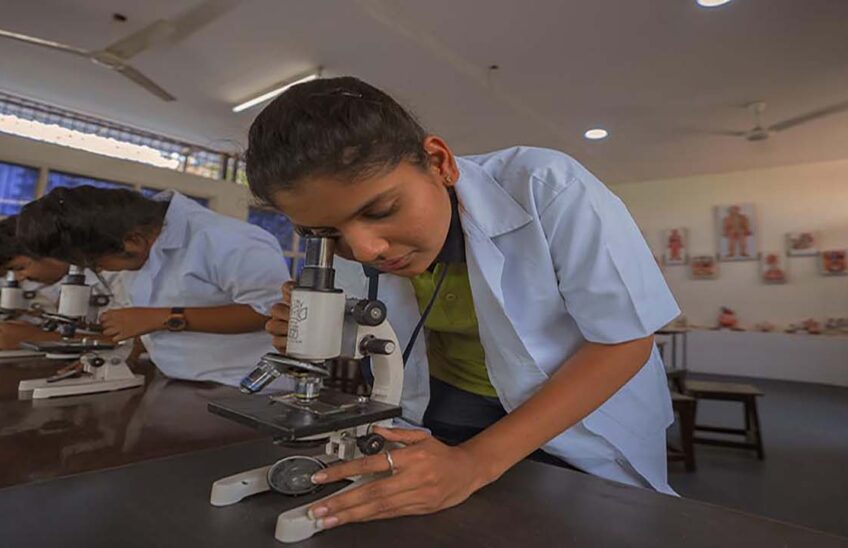
What is Holistic Learning?
Holistic education aims to meet students’ emotional, social, ethical, and academic needs in an integrated learning format by addressing their emotional, social, and ethical needs. There is a strong focus on providing students with academic and nonacademic needs in a positive school environment. Officials from state governments and school districts set the tone for whether academic-centric or holistic learning concepts will be prioritized in learning environments.
However, teachers are in charge of putting learning policies into action. They have the best chance to use holistic teaching strategies to support students in finding their identities and the significance of connections to their communities and the wider world. Today, many schools in India include holistic objectives to improve the educational system. While a single overall principle informs holistic education, teachers may use various techniques to foster a holistic learning culture.
Benefits of Holistic Learning
Based on a learning concept, holistic education has several benefits for students, teachers, schools, and communities. Students are given the tools they need to enhance their academic performance and develop the soft skills required for a prosperous professional career.
1. An increase in academic achievement
Regardless of background or circumstances, holistic education can raise academic performance for all students by addressing individual learning preferences and fostering a positive learning environment. Children’s brain development is enhanced when they feel physically and emotionally safe and linked to others.
2. Achieving Emotional and Mental Well-Being
Students have a better chance of graduating with self-awareness, confidence, and a sense of social duty in a supportive setting where social and emotional development is prioritized alongside academics.
3. Builds Confidence
By giving them a variety of chances to succeed, teachers instill confidence in their students and assist them in developing that confidence. Teachers can identify each student’s individual abilities thanks to a comprehensive curriculum that treats every student equally.
Holistic Education vs Traditional Education
The primary distinction between the two educational models is that traditional education emphasizes outcomes in discrete, unrelated disciplines. In contrast, holistic education emphasizes the learning process and teaches several subjects as a single, interconnected whole.
Here are three significant examples of how the differences are manifested.
1. Creating a dynamic classroom
In traditional classrooms, desks and chairs are arranged in rows. Teachers give students passive information in them while they sit and listen. They may talk only when the teacher gives permission. In a holistic classroom, students arrange the classroom in various ways based on their learning. They might sit in a group of three or four students to have group discussions. They might also work at tables holding lab experiments or art projects. The students share their ideas and discoveries & thus, these activities genuinely engage them.
2. Learning Self-Confidence
Holistic educators consider it their responsibility to prepare pre-primary children for survival in the outside world in their initial stages of education. The first step in doing that is instilling confidence. Traditional classes frequently address the subject of failure. When a lesson’s goal is to ace a test, the student may become disenchanted and give up. To overcome obstacles, resilience and tenacity are taught in holistic classrooms. They understand & respect that each kid has a personalized way of learning. Students gain self-esteem and an appreciation for their talents. They learn how to build a strong family and social ties and deal with and overcome obstacles in life.
3. Memorizing facts is not real learning
In traditional education, instructors “teach to test” by emphasizing information that students will only repeat on a test. Students that attend holistic schools learn teamwork and collaboration abilities that they will need in the workplace. Lessons emphasize subjects in original ways that promote critical thinking. Cross-disciplinary learning is practiced by students who are motivated to learn more.
Importance of Holistic Education
Due to the ease with which students can access information today, holistic education is more important than ever. There is a vast amount of information available online, but students who have become accustomed to accessing it can filter out those that are relevant from those that aren’t.
Holistic education aims to help each student discover their unique path. An educational approach that focuses on the whole child can be called ‘whole child education. The main focus areas of holistic education are students’ emotional, intellectual, physical, spiritual, and social development.
A Health and Physical Education (HPE) program has been implemented for Classes one to eight as part of the board’s strategy for the holistic development of children. Last year, the same was made compulsory for classes 9 to 12 in all the schools under CBSE education.
Frequently Asked Questions
Q. How do you implement holistic development in the classroom?
A. By embracing play-based learning, inquiry based learning, & incorporating arts, sports & music activities we can implement holistic development in the classroom.
Q. What is the role of a teacher in holistic development?
A. The teacher, who builds their instruction on the fundamental ideas of holistic development, lets the student find and comprehend the various connections and correlations. The knowledge thus becomes a part of the child’s experience and becomes personal and socially significant.
Q. What is a holistic approach in early childhood education?
A. By supporting children as they learn at their own pace is important for their early childhood development and by encouraging and taking every opportunity to explore their interests in a comfortable, natural environment we are able to create a holistic environment.



Leave a Reply